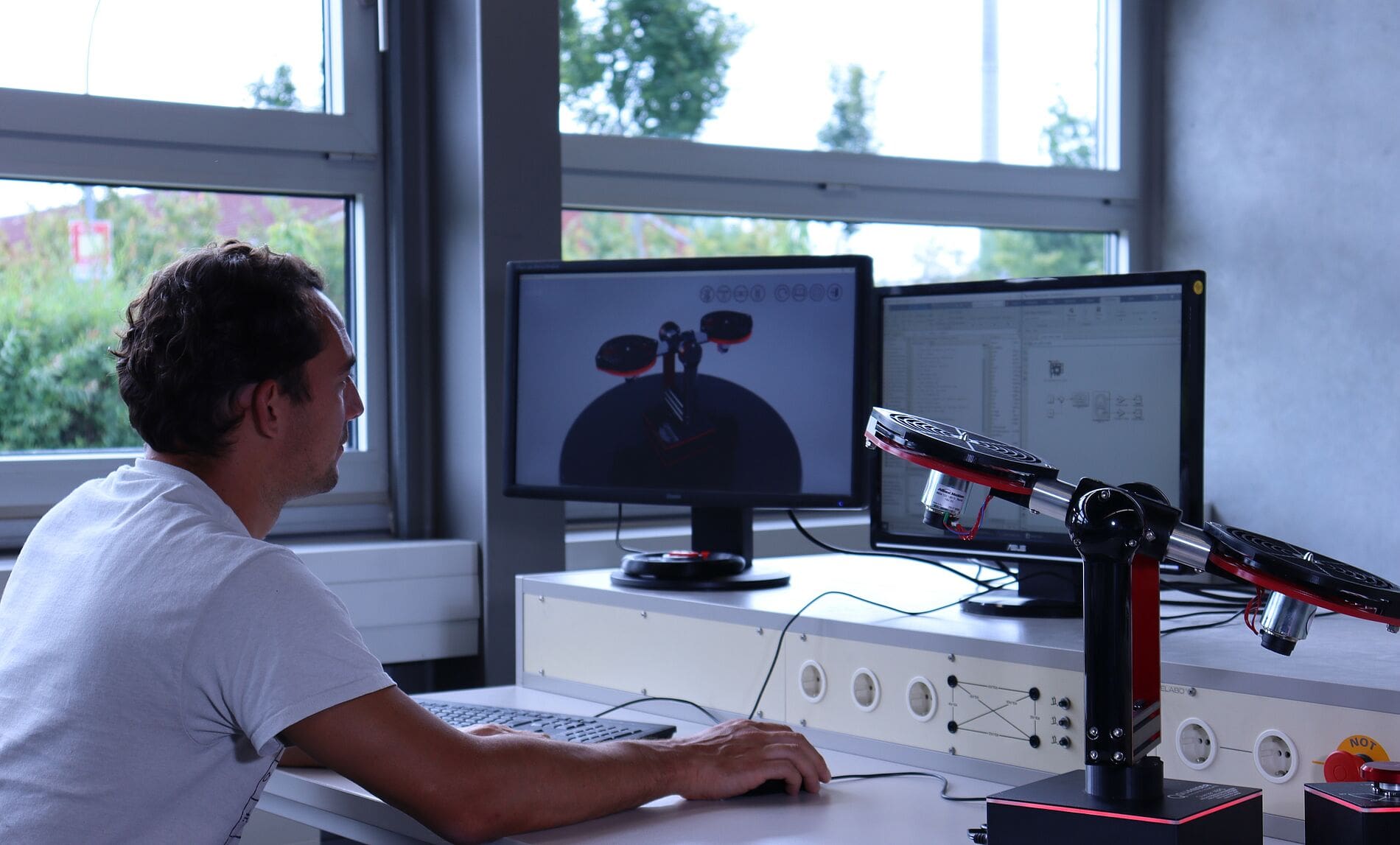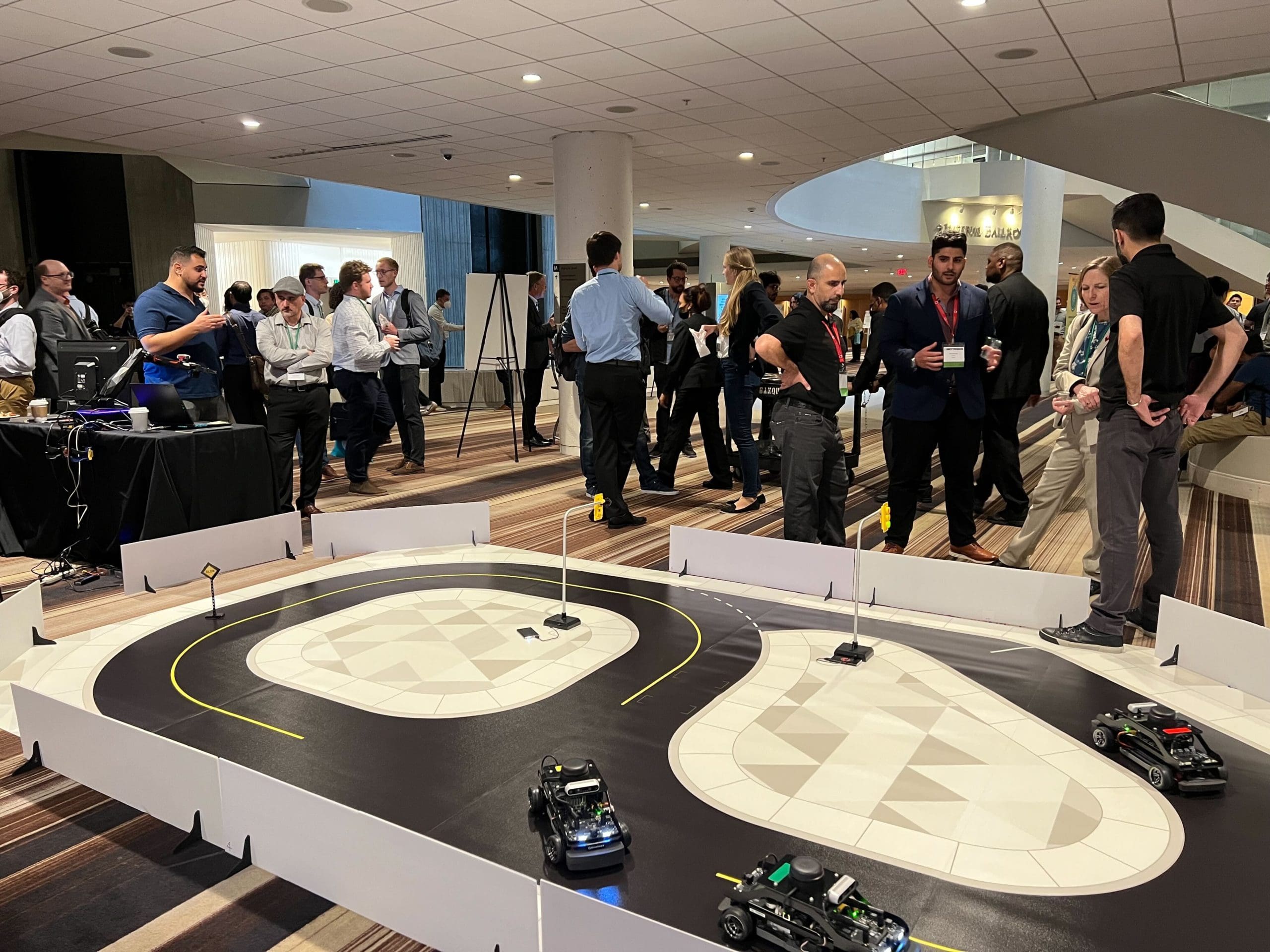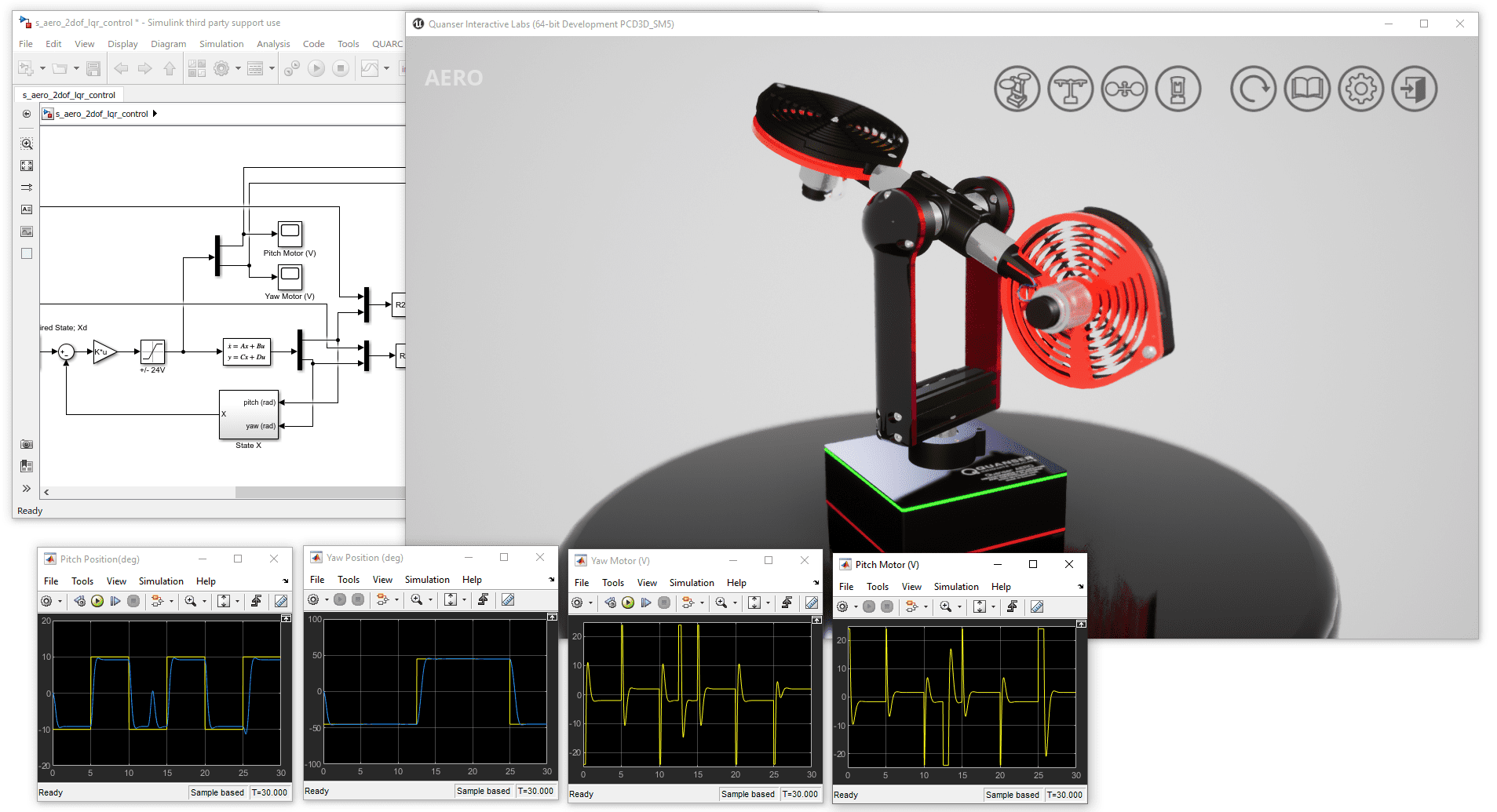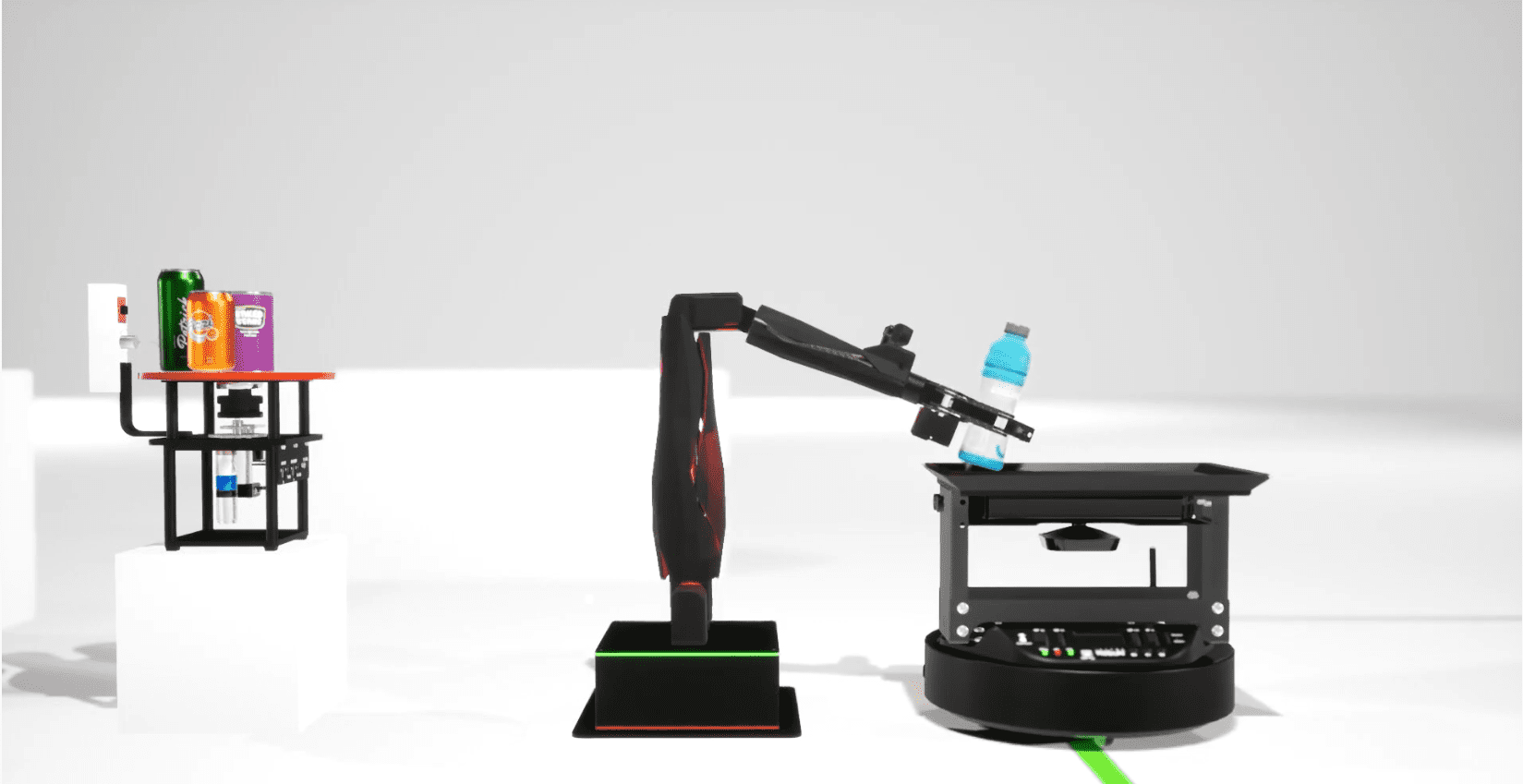
In the spring of 2020, the senior members of the Quanser R&D team met for a crucial brainstorming session. This was not our typical management session, where we talked about project priorities, nor was it a regular brainstorming session where we would often have teams present concepts for the next generation of our products. This session was called specifically to discuss pivoting the direction of our R&D efforts away from hardware to focus on a new set of solutions. This change in the fundamental philosophy of our academic solutions was unprecedented, but the state of engineering education, especially in the laboratory, in early 2020 was also unprecedented.
As the global pandemic set in, schools rushed to find alternatives to in-person hands-on learning experiences. This perpetuated the topic of the day in the aforementioned fateful meeting: could we offer an alternative to our traditional physical systems that would allow students to gain the same skills and outcomes at home? If so, how and, more importantly, when?
The solution that surfaced that would give us our fastest route to an immediate answer was to pull together our expertise in Unreal Engine and mobile apps to create a series of digital twins of our core systems for controls education. This plan would allow our existing customers to pivot to using digital versions of our core systems quickly and easily on any platform (Windows, macOS, iOS, and Android). With our sales and support teams getting questions from professors looking for solutions for distance education coming daily, we pulled together 16 engineers and kicked off a mad sprint to pull together a platform. Three months later, roughly a quarter of the time it would typically take our team to create a product, we launched Quanser Interactive Labs (QLabs) with QLabs Controls. Not only had we completed a set of digital platforms, we had also created a licensing platform and a complete set of bespoke curricula designed to emphasize hands-on skills and take advantage of the capabilities of digital platforms.
While QLabs Controls offered a solution for our customers that allowed them to continue offering labs without needing virtual machines, remote access, or specific workstation performance, an important piece was missing: the ability to provide students with experiences building controllers in MATLAB,® Simulink® or Python. Once again, we set to work, and only another three months later, we launched the QLabs Virtual Experiments. This newest element of Interactive Labs improved the fidelity of the dynamic models of the twinned systems, expanded the range of products to eight experiments, and gave instructors the ability to use their existing MATLAB/Simulink laboratories without the need for any significant customization.
Slowly but surely, adoption took off. Over the last two years, we have seen institutions worldwide, from Canada to China, the UK to Argentina, adopt Quanser Interactive Labs to bring hands-on experiences to students off and on-campus. Now that many students have returned to traditional on-campus lab activities, we have started to pivot our offering to appeal directly to hybrid and blended classrooms.
The University of Calgary in Canada was one of the schools that implemented QLabs to deliver an ambitious Control Systems course. Rachael L’Orsa, Ph.D. student in the Department of Electrical Engineering said, “I think our School sees QLabs as a solution for pandemic-only needs, but I believe it adds a lot of value for a modern teaching experience and I hope to prove that with the course this fall.” If you want to learn more about the QLabs experience at the University of Calgary, you can read their case study.
What does the future hold for QLabs? Our R&D team has begun integrating our more advanced platforms, including the QCar and Self-Driving Studio, to take full advantage of the capabilities of digital environments and virtual reality. We have also created some prototype environments to allow more customization and reconfigurability of the virtual environments to offer students exciting and motivational application contexts.
It’s been a long and bumpy road from our initial beta release of Quanser Interactive Labs in April of 2020 to our recent milestone of over 10,000 users at over 70 institutions in over 20 countries. I’m very proud of the platform we have built and the work that our team and our friends worldwide have invested into giving students valuable experiences on and off-campus. Here’s to 10,000 more!



